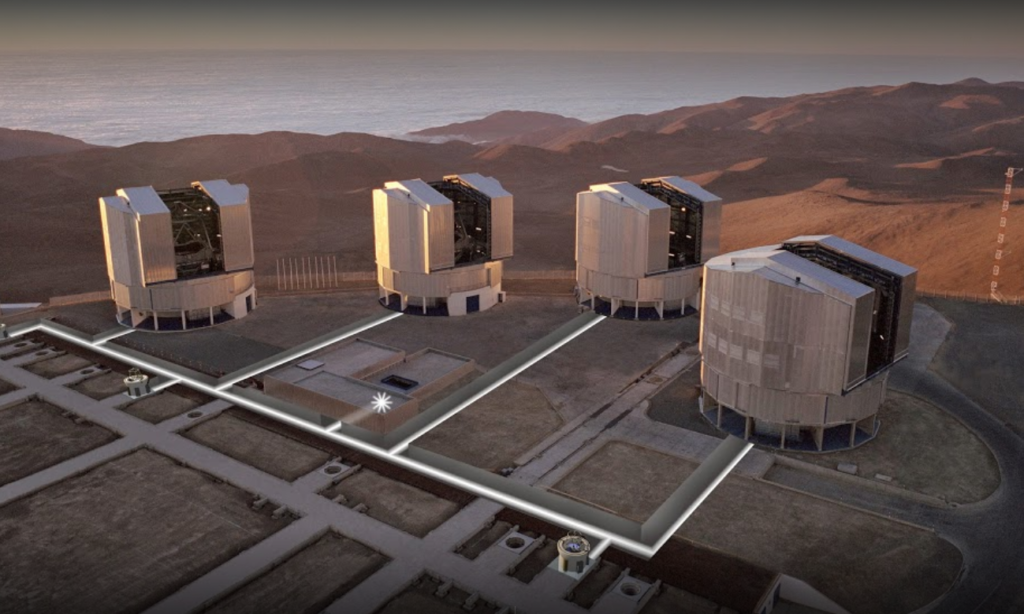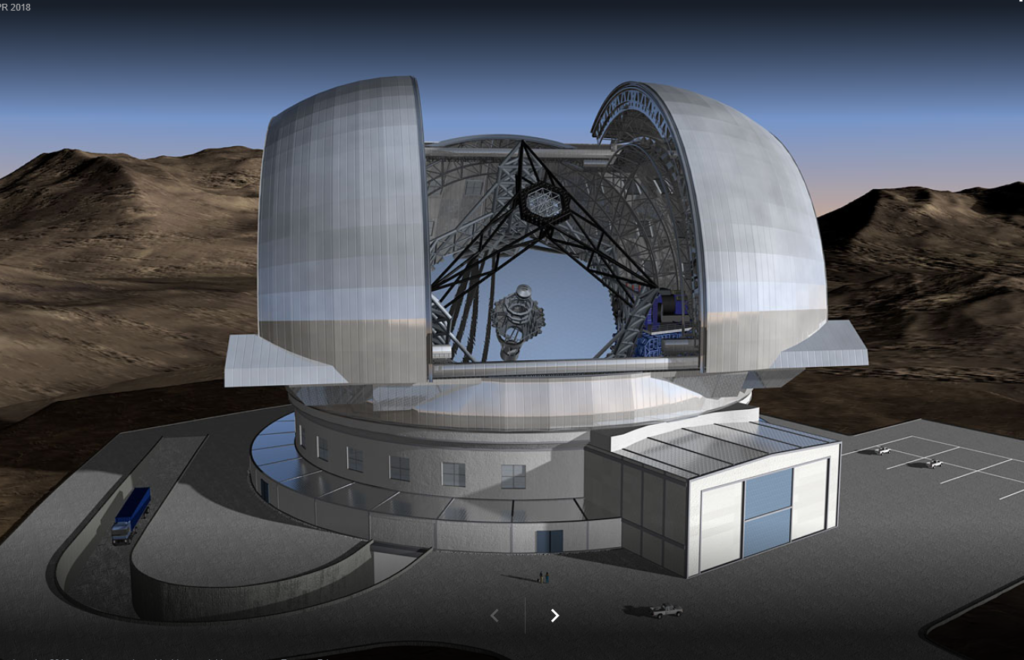A telescope is an optical instrument that uses lenses or mirrors and other optical devices to observe distant objects. The light passing through the lens is refracted or the light is reflected by the concave mirror to make it enter the small hole and converge to image, and then pass through a magnifying eyepiece to be seen. Also known as “telescope”.
After more than 400 years of development, telescopes have become more and more powerful, and the observation distance has become farther and farther.
In 1608, the Dutch Middelburg optician Hans Lippershey built the world’s first telescope. Once, two children were playing with a few lenses in front of Li Boer’s shop. They looked at the weathercock on the church in the distance through the front and rear lenses, and the two were very happy. Lippershey picked up two lenses and took a look. The weathercock in the distance was magnified a lot. Li Boer raced back to the store and put two lenses in a tube. After many experiments, Hans Li Boer invented the telescope. In 1608, he applied for a patent for the telescope he made, and in compliance with the requirements of the authorities, he built binoculars. It is said that dozens of telescope opticians in the town claimed to have invented the telescope.
At the same time, the German astronomer Kepler also began to study telescopes. He proposed another astronomical telescope in “Refractive Optics”. This telescope consists of two convex lenses. Unlike Galileo’s telescope, it has a wider field of view than Galileo’s telescope. . But Kepler did not make the telescope he introduced. Scheiner made this telescope for the first time between 1613 and 1617. He also made a telescope with a third convex lens according to Kepler’s suggestion, turning the inverted image of the telescope made of two convex lenses into a positive image. . Scheiner made 8 telescopes, one by one to observe the sun, no matter which one can see the sunspots of the same shape. Therefore, he dispelled the illusion that many people thought that the sunspots might be caused by the dust on the lens, and proved that the sunspots are indeed the observed real existence. While observing the sun, Scheina installed special light-shielding glass, but Galileo did not add this protective device. As a result, he hurt his eyes and almost lost his sight. In order to reduce the chromatic aberration of the refracting telescope, Huygens in the Netherlands built a telescope with a tube length of nearly 6 meters in 1665 to explore the halo of Saturn and later built a telescope with a length of nearly 41 meters.
In 1793, the British Herschel (William Herschel) made a reflecting telescope with a diameter of 130 cm, made of copper-tin alloy, and weighing 1 ton.
The reflecting telescope made by William Parsons in the United Kingdom in 1845 has a diameter of 1.82 meters.
In 1917, the Hooker Telescope was built at the Mount Wilson Observatory in California, USA. Its main reflector has a diameter of 100 inches. It was with this telescope that Edwin Hubble discovered the amazing fact that the universe is expanding.
In 1930, German Bernhard Schmidt took advantage of the advantages of refracting telescopes and reflecting telescopes (refracting telescopes have small aberrations but have chromatic aberrations and the larger the size, the more expensive they are. The reflecting telescopes have no chromatic aberration, are low in cost, and can be made very large. , But there are aberrations) combined to make the first catadioptric telescope.
In 1969, a 6-meter-diameter mirror was installed on the Pastukhov Mountain in the northern Caucasus of the former Soviet Union.
In 1990, NASA put the Hubble Space Telescope into orbit. However, due to a mirror failure, the Hubble Telescope did not begin to fully function until 1993 when the astronauts completed the space repair and replaced the lens. Because it can not be disturbed by the earth’s atmosphere, the image clarity of the Hubble Telescope is 10 times that of images taken by similar telescopes on the earth.
In 1993, the United States built a 10-meter-diameter “Keck Telescope” on Mauna Kea Mountain in Hawaii. Its mirror surface was made up of 36 1.8-meter mirrors.
In 2001, the European Southern Observatory in Chile developed the “Very Large Telescope” (VLT), which consists of four 8-meter telescopes, and its light-gathering capacity is equivalent to that of a 16-meter reflecting telescope.

On June 18, 2014, Chile will level the top of Cerro Amazones to house the world’s most powerful telescope, the “European Extra Large Astronomical Telescope” (English abbreviation E-ELT). Cerro Amazon is located in the Atacama desert, 3000 meters above sea level.
E-ELT, also known as “the world’s largest eye in the sky”, is nearly 40 meters wide and weighs about 2500 tons. Its brightness is 15 times higher than that of existing telescopes, and its clarity is 16 times that of Hubble. The telescope cost 879 million pounds (about 9.3 billion yuan) and is expected to be officially put into use in 2022.
A group of telescopes under construction has begun to attack the white giant brothers on Mauna Kea again. These new competition participants include the 30-meter Thirty Meter Telescope (TMT), the 20-meter Giant Magellan Telescope (GMT), and the 100-meter Great Telescope ( Overwhelming Large Telescope, OWL for short). Their proponents pointed out that these new telescopes can not only provide images of space with far better image quality than Hubble telescope photos but also collect more light, which is important for the initial state of stars and cosmic gas when galaxies formed 10 billion years ago. Learn more about the situation and see the planets around distant stars clearly.


